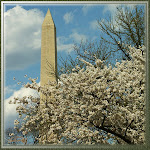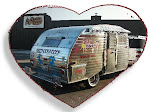Yes, sometimes we CAN go back in time . . .
. . . and the newly-opened MUSEUM at Bethel Woods Center for the Arts, in Bethel, New York, is proof of that. With its emphasis on the Woodstock Music and Arts Fair, which was held on its grounds, August 15, 16 and 17, 1969, the whole 60's era is fully explored through visual and sensory sights, sounds and memories. The politics musical evolution, the Vietnam-era draft, the assassinations of the Kennedy Brothers and Dr martin Luther King, Jr, and Man's first steps on the moon. All of this, and so much more, is fully explored in an amazing museum which took three years to create.
Every 'Flower Power/Hippie' cliche came to mind as we passed through the entry doors of the beautiful building last Wednesday. It's a 'Happening' in its own right. If you were in attendance during those three memorable days in 1969, you recall that it was NOT held in Woodstock, New York.
After the promotor's family was threatened by local residents who rallied against the possibility of 10,000 'rabble-rousing hippies and druggies' invading their peaceful town for 3 days, another location was sought out. The second choice was beautiful White Lake - but as the attendee numbers appeared to be swell beyond the original figure, that site was considered too small.
Eventually a farmer named Gelish, with a great location in nearby Bethel,agreed at the last minute to host the Woodstock music extravaganza on his property, just outside the peaceful hamlet.
With peaceful, rolling hills, and magnificent views of the Catskills, the mood was set. Getting all the equipment, stage, fencing, and other requirements into position was another matter. It was a hopeless task, yet the stage hands and workers got it together - almost. The fencing never was completed.
Advance tickets were sold for $6.00 per day. Yup. $18 bought you three days of live music - from rock, to country, to soul, folk and everything in between. Getting the bands was a feat in itself - many did not want to perform in an outdoor field in rural New York. Eventually, new names, like Crosby, Stills and Nash as well as the young Greatful Dead and Janis Joplin were among the notable and new who decided to give it a chance, being paid from $3,000 - $15,000 each for their onforgettable performances.
As the list of performers' names grew, so too did the crowds. Friends of ours said they drove as far as Monticello, but the traffic tieups were so bad that they turned around and went home.
From Sea to Shining Sea they came - waves of excited music lovers, swelling beyond any conceivable numbers. For those few who bought tickets there was no special seating. Days before the first bar of music sailed out over the Catskills, the masses started to arrive.
The anticipated fencing was worthless. Thousands trampled over the downed wire and onto the grounds. There wasn't enough food and getting to a Porta-Potty became a half-day adventure. To make it worse, the weather took a nosedive. Along with the sea of people - almost 400,000 - came waves of rain and thunderstorms and lightning.
In spite of the horrendous conditions, the music ruled. The music rocked. The music rolled. And the constantly moving tides of people rocked and rolled along with it. One attendee said that the whole experience was amazing. Everyone looked out for their neighbor and gave what they could to make someone with less more comfortable.
Food was brought in by helicopter when roads were too blocked by travelers to get supplies through. Most of the musicians arrived by air too, stunned by the unexpected sea of faces waiting to greet their musical idols and listen as their songs and sounds were emotionally fused deeply into each man, woman and child present. Unanimously, in later interviews, they all admitted to being wholly absorbed by the outpouring of love and appreciation for the musical gifts they brought.
Not even the terrible weather could stop the performances. The Greatful Dead gave a phenomenal performance - without any power. Yet, even though they played at night, in the dark, their music was heard - and appreciated.
In the creation of this beautiful museum, many images and video were located - much of which has never been seen or heard until now. It was all documented and recorded.
Meandering through and around all the displays, sounds and video presentations, visitors are transported through the tumultuous decade that was the 60's. The styles, the music, the men and women who shaped the decade with such energy that the relevance is palpable even today.
Janis Joplin, in an interview on the Dick Cavett Show after Woodstock, explained her heart-wrenching style in the need to hear women speak out from their core and fing their true selves and voices - not a popular idea of the times, when we were still being encouraged to be seen and not heard.
And, Muhammad Ali - then known as Cassius Clay. Nowadays he's beloved by so many. A gentle man with a huge heart. In the 60s we thought him pompous and loud-mouthed. When he refused to accept the draft everyone was in shock and dumbfounded by his audacity. On Wednesday I read the words he spoke as to WHY he refused to fight. Take the time to do so. Please read his words. Everyone. His words were prophetic, and totally understandable. Let our government leaders read them today - aloud - and let the words sink in. Sadly, they still apply.
As for the Hippies and drugs. Take the time to listen to all who spoke out to make this wonderful experience - the MUSEUM at bethel Woods Center for the Arts - come alive. The Hippies taught us how to work as a team united. At Woodstock, people helped each other to get through bad trips - not by giving them medicine with long-lasting negative effects, but instead, they walked the affected through their demons and out the other side. In turn, those people, stronger emotionally, also helped others after. It was a poerful, healing time for many.
By the time you reach the final, 20-minute documentary, in a beautifully appointed theater, there is still one more doorway - a room in which you can record your own experiences of the time - for future visitors to continue to enhance their visit.
Still wrapped in the aura of all we had just taken part in, I left the building firmly entrenched in the 60s once again. Down the hill, in the ampitheater, musicians were rehearsing for this weekend's performance. In the early summer afternoon, the colors were fresh and vibrant and lush carpets of dense, soft grass covered the area where once, 39 years ago, 400,000 enthusiastic music fans came to see and hear the bands and solo artists who are today's music legends in their own right.
The MUSEUM at Bethel Woods Center for the Arts is a must see, must feel experience.
































